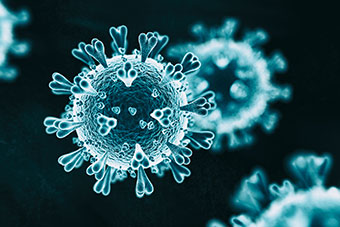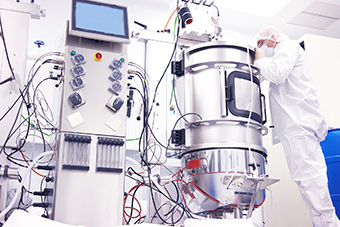
Dielectric spectroscopy (DS), also known as capacitance measurement, has been used as a PAT tool for viral vector production processes (lentivirus, adenovirus, reovirus, influenza, baculovirus) with mammalian and insect cells. It has been viewed as an important advancement for viral process control for continuous virus production processes.
Numerous groups have explored this technology to monitor live cell density, identify critical events and control the process. The benefits of using capacitance technology in these applications are multifold. We summarize these benefits here, that have been supported by peer-reviewed published empirical evidence, references for which have also been provided above. Considering capacitance measurement correlates with the live cell density (or more accurately, viable biovolume) profile of the culture, it provides a complete, real time and detailed picture of all of the critical events, as described below. This leads to better process monitoring, automation and control and in turn, improved productivity.

Accurate control of the feed or addition rates are an Essential Requirement in Perfusion Processes. Maintaining pseudo-steady-state conditions in these bioreactors can be especially challenging due to high and fluctuating cell concentrations that can rapidly change environmental conditions. With infrequent, manual viable cell counts based on trypan blue exclusion, the control system can have too little information on which to base an appropriate decision to manipulate the process, and hence will lead to large process deviations. By introducing tight control of the perfusion or concentrate addition rate allows the bioreactor to be operated under the optimum conditions for maximum recombinant protein production.
Dielectric spectroscopy (DS), also known as capacitance measurement, has been used as a PAT tool for vaccine and viral vector production processes (adenovirus, lentivirus reovirus, influenza, baculovirus) with mammalian and insect cells. It has been viewed as an important process control tool for continuous virus production processes.
Numerous groups have explored this technology to monitor live cell density, identify critical events and control the process. The benefits of using capacitance technology in these applications are multifold. Considering capacitance measurement correlates with the live cell density (or more accurately, viable biovolume) profile of the culture, it provides a complete, real time and detailed picture of all of the critical events. This leads to better process monitoring, automation and control and in turn, improved productivity.
Dielectric spectroscopy has been successfully used in the bioprocess industry to measure cell density in bioreactors for close to three decades. With FDA’s PAT initiative, capacitance based cell density measurements have become even more relevant and valuable.
The ability to measure viable cells exclusively, in-situ and in real time makes this technology stand apart from others. Over the years, it has been used for a variety of applications that include not only monitoring the cells, but also automatically controlling a critical aspect of the process

Radio Frequency Impedance (RFI) has been used successfully for monitoring and controlling animal cell processes at a production scale. Different options for transmitters are available for such cGMP applications. A transmitter with a touch screen interface, the Aber V350 can be installed next to the bioreactor. Alternatively, the single or multi channel Connect Hub which does not have a screen can also be integrated into control systems. The availability of single use RFI probes has opened up many more options for future applications.
In many cell culture manufacturing processes it is traditional to define a fixed-volume feed strategy for nutrient feeds based on historical cell demand. However, one major drawback of this strategy is that once the feed volumes are defined, they are inflexible to batch-to-batch variations in cell growth and physiology. This can lead to inconsistent productivity and product quality. An auto feedback system using online Aber RFI measurements makes it possible to automatically control the complex feed rates (Zhang et al., 2015). The nutrient feed amount can be determined by calculating the integrated biomass which is derived by determining the area under the biocapacitance (BC) curve across a predetermined time interval (typically 24 h).
The original approach in the study by Zhang et al (2015) was to convert the BC reading to VCD and then feed based on the estimated cumulative of estimated cell growth (cICG). However, the capacitance reading was found to directly correlate with the cICG-based feed amount which made it feasible to directly use the online BC reading to control the feed rate. This also eliminates the need to use models based on either the Cole-Cole equation-based approach or multivariate analysis (Lee et al., 2015) to adjust capacitance to match the offline viable cell density (VCD) during the later stages of cell growth, where there may be a divergence observed between the measurements.

Scaling is an important aspect with respect to any cell culture process which involves transferring a bioprocess from one bioreactor size to another which can include scale-up and scale-down. Scale-up is required when a process is being developed for smaller, easy to handle volumes, with the final goal of commercial manufacturing at a much larger scale. Scale-down on the other hand is critical to troubleshoot large scale processes, for producing smaller quantities of product and to verify process condition changes.
When moving from a small scale system to commercial manufacturing, the critical quality attributes of the product being developed and manufactured should be identical. Therefore, it is imperative that the key parameters and performance during the scaling process are kept constant.
As an example of how Aber’s capacitance technology is scalable, Figure 1 and 2 show cultivations in RM 50, RM 200, STR 50, STR 200 and STR 1000 platforms (Sartorius, Germany) using capacitance to monitor biomass. Capacitance trends measured using the single use BioPAT Viamass were observed to be comparable across these platforms, thus indicating successful scale up. This demonstrates that not only can Radio Frequency Impedance measurements be used across platforms, but can also be used to determine the success of the scaling strategy across different platforms.





 Product Page
Product Page 


